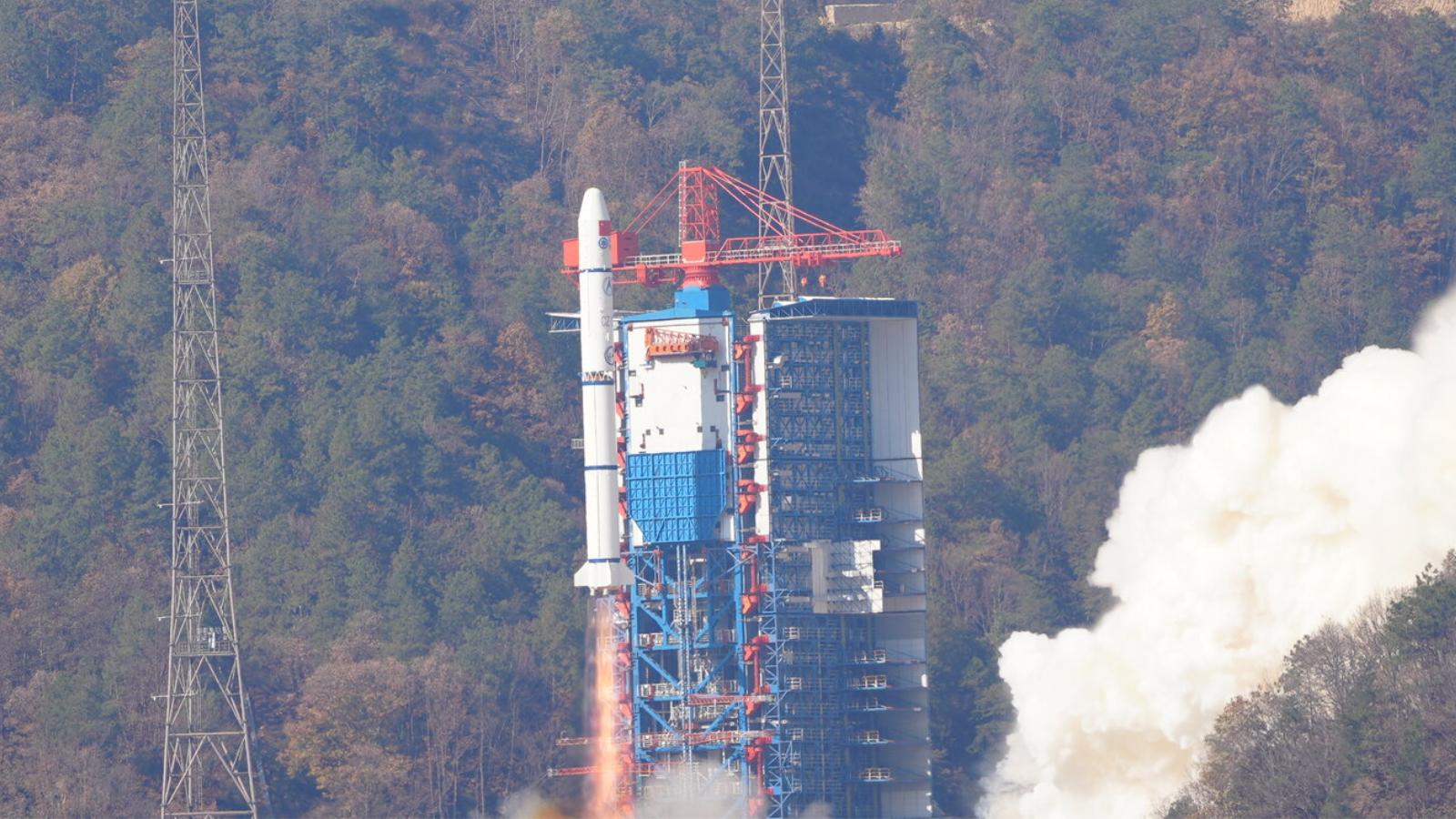
China launched its Einstein Probe on Tuesday (Jan. 9), kicking off its mission to observe the X-ray sky.
The Chinese Academy of Sciences (CAS) spacecraft will hunt for high-energy light from some of the universe's most powerful objects and events, including feeding black holes, neutron star collisions and supernovas that mark the explosive death of massive stars.
The Einstein Probe took to the skies atop a Long March 2C rocket from the Xichang Satellite Launch Center on Tuesday at 2:03 a.m. EST (0703 GMT and 3:03 p.m. local time). The European Space Agency (ESA) and the Max Planck Institute for Extraterrestrial Physics (MPE) in Germany are collaborating with China on the mission.
"I would like to congratulate our colleagues at CAS on the successful launch of an innovative mission that is set to make great strides in the field of X-ray astronomy," ESA Director of Science Carole Mundell said in a statement. "At ESA, we value international collaboration to advance science and deepen our understanding of the cosmos. I wish the Einstein Probe team a very successful mission."
Related: Einstein Probe will use its 'lobster eye' to hunt for extreme black holes and star explosions

Following the launch, the Einstein Probe reached an altitude of around 370 miles (600 kilometers). The spacecraft is now circling Earth roughly once every 96 minutes in an orbit inclined at 29 degrees.
This will enable it to monitor almost the complete night sky over Earth in the course of just three orbits for its planned mission duration of three years, and perhaps into an extended mission.
But the spacecraft isn't ready for science work quite yet. Over the coming six months, the mission team will test and calibrate the spacecraft's two primary instruments. These are the Wide-field X-ray Telescope (WXT), which takes in a vast expanse of space with a lens inspired by the eye of a lobster, and the Follow-up X-ray Telescope (FXT), which will zoom in on prime targets spotted in this wide view.
This strategy will allow the Einstein Probe to spot new X-ray sources in the night sky that could be blasts of high-energy radiation launched by the collision of two neutron stars, or from black holes as they greedily feast on matter like gas, dust and even stars, or from supernova explosions.
By spotting these bursts of X-rays, the Einstein Probe will provide data that teaches scientists more about the unique physics that occurs around the most powerful and violent cosmic events.
"I am looking forward to the discoveries that Einstein Probe will enable," ESA Einstein Probe Project Scientist Erik Kuulkers said in the same statement.
"Thanks to its uniquely wide gaze, we will be able to catch the X-ray light from collisions between neutron stars and find out what is causing some of the gravitational waves we detect on Earth," Kuulkers added. "Often, when these elusive space-time ripples are registered, we cannot locate where they are coming from. By promptly spotting the burst of X-rays, we will pinpoint the origin of many gravitational wave events."







